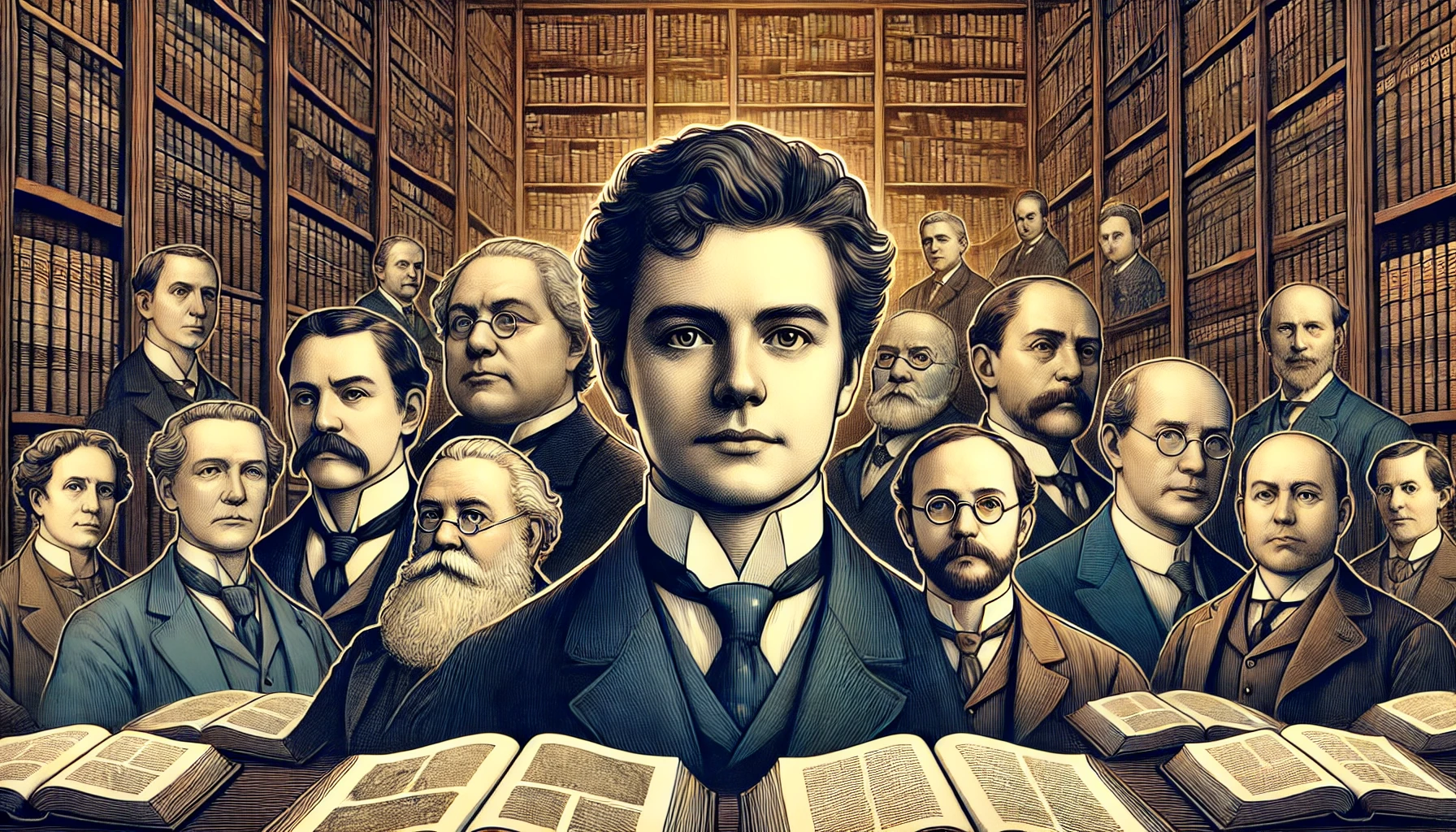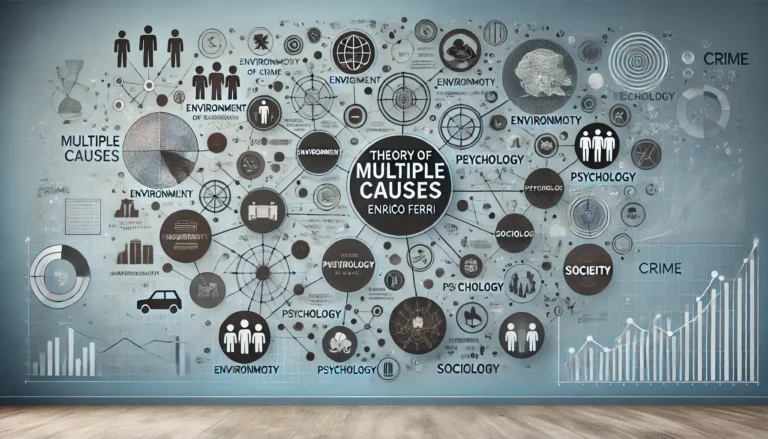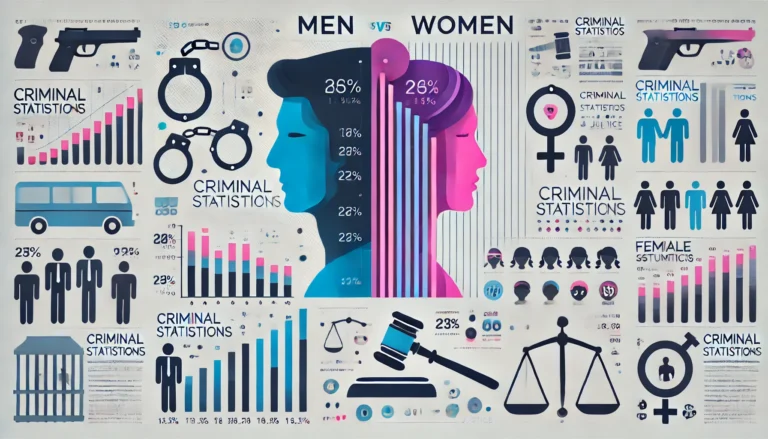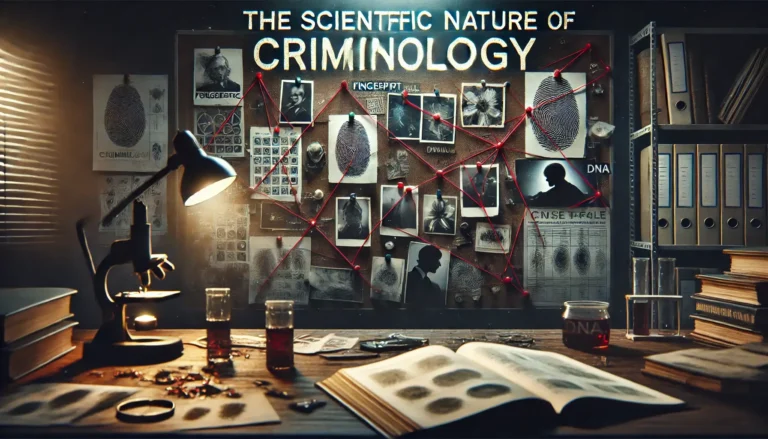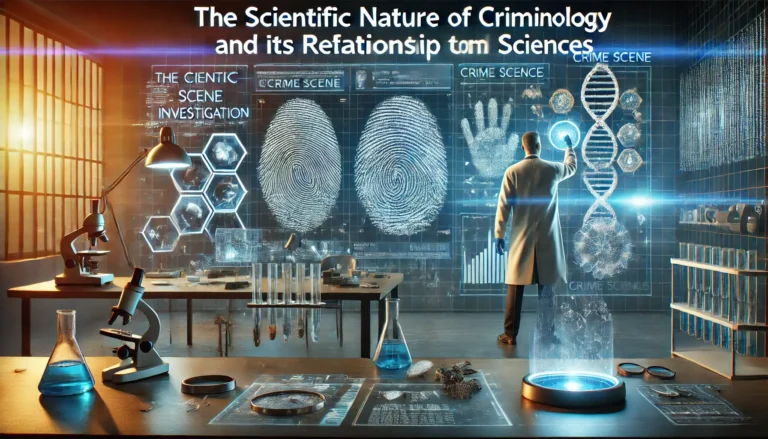Prominent thinkers in criminology Lombroso and others
Criminology is a key branch of social and legal sciences, dedicated to the study of criminal phenomena from a scientific perspective. This discipline seeks to understand crime as a social, psychological, and legal phenomenon, analyze its causes and impacts, and devise effective strategies for prevention and control. Throughout history, many thinkers and scholars have significantly contributed to the development of criminology by introducing theories and ideas that transformed the understanding of criminal behavior.
Emerging as an independent field in the 19th century, criminology was shaped by the efforts of prominent thinkers such as Cesare Lombroso, often regarded as the father of modern criminology, Enrico Ferri, who broadened the field by incorporating social and economic factors, and Raffaele Garofalo, who introduced the concept of “natural crime.”
As the field evolved, contemporary thinkers further enriched criminology by employing modern methods rooted in technology and interdisciplinary studies. This article aims to present a comprehensive analysis of these thinkers’ contributions, from classical theories to contemporary research, while exploring their influence on criminology and criminal justice policies.
Cesare Lombroso: Theories and Contributions (Expanded)
Lombroso’s Academic and Professional Background
Cesare Lombroso was born in 1835 in Verona, Italy. He studied medicine and surgery, with a particular interest in psychiatric and neurological disorders. His role as a military physician gave him unique opportunities to observe human behavior under exceptional circumstances. Later, as a professor of forensic medicine, he merged his medical expertise with his research on crime.
The Anthropological Theory of Crime
Lombroso introduced a groundbreaking idea in criminology: criminal behavior could result from biological heredity. His observations in prisons revealed recurring physical patterns among inmates, such as pronounced jaws and asymmetrical skulls. He concluded that criminals were an “atavistic regression” to earlier stages of human evolution.
Physical Traits and Criminality
Lombroso focused on the relationship between physical traits and criminal behavior, suggesting that certain physical characteristics could identify “born criminals.” These traits included:
- Abnormally long arms.
- Significantly reduced intelligence compared to others.
- Presence of scars or physical deformities.
The Impact of His Theories on Criminology
Lombroso’s ideas emerged at a time when traditional criminological theories were rooted in morality and religion. His theories revolutionized the field by directing attention toward the scientific and medical aspects of criminal behavior.
Criticism of His Theories
Despite their significance, Lombroso’s ideas faced intense criticism. Critics pointed out that his studies were limited and based on unrepresentative samples. Furthermore, his theory was rejected for its discriminatory nature, which linked crime to physical characteristics. Nonetheless, his work inspired subsequent research and paved the way for more comprehensive theories.
Enrico Ferri: The Theory of Multiple Factors (Expanded)
A Brief Biography of Ferri
Enrico Ferri, born in 1856 in San Benedetto Po, Italy, studied law and sociology. Deeply influenced by his mentor Cesare Lombroso, Ferri eventually expanded his perspective to provide a more holistic view of crime.
The Concept of Multiple Factors in Criminality
Unlike Lombroso, Ferri argued that crime could not be explained solely by hereditary factors. He proposed the “theory of multiple factors,” suggesting that crime results from the interaction of:
- Biological factors: Heredity, mental illnesses, and physical conditions.
- Psychological factors: Emotional influences and individual motivations.
- Social factors: Economic conditions, education, and culture.
The Role of Biological, Social, and Economic Factors
Ferri emphasized the importance of considering the offender’s surrounding circumstances. For example, poverty and unemployment could push individuals toward committing crimes for economic survival.
His Contributions to Criminal Policy
Ferri advocated for a penal system focused on prevention rather than punishment. He believed society should address social conditions to reduce crime rates effectively.
The Impact of His Ideas on Modern Policies
Ferri’s theories influenced the development of modern criminal policies, where social reform and offender rehabilitation became integral components of justice systems worldwide.

Raffaele Garofalo: The Concept of Natural Crime (Expanded)
A Brief Biography
Raffaele Garofalo, born in 1851 in Naples, Italy, was a jurist and legislator who contributed significantly to criminology by introducing the concept of “natural crime.” This idea emphasized harmony with moral and social norms.
The Concept of “Natural Crime” and Its Dimensions
Garofalo defined crime as an act that violates essential moral norms necessary for societal survival. His focus shifted from biological aspects to ethical and social dimensions.
Applications of This Concept in Criminal Law
Garofalo’s “natural crime” concept guided legislation to align legal frameworks with moral values.
Criticism and Academic Debate
While Garofalo’s ideas were influential, they faced criticism for being vague and relying on values that vary across societies. Nevertheless, they significantly impacted the development of ethical criminology.
Contemporary Thinkers and Their Role in Advancing the Field (Expanded)
Prominent Contemporary Thinkers
- Edwin Sutherland: Developed the differential association theory, explaining criminal behavior through social influences.
- Travis Hirschi: Introduced the social control theory to explain crime.
- Lawrence Sherman: Pioneered experimental criminology.
Technological Advancements and Modern Criminology
With technological advancements, modern criminology now incorporates tools like big data analysis and artificial intelligence to understand crime patterns and predict criminal behavior.
The Future of Criminology
The future of criminology lies in integrating various disciplines such as psychology, sociology, and technology to provide a comprehensive understanding of criminal behavior.
Conclusion
From this analysis, it is evident that criminology has undergone significant transformations, thanks to the contributions of thinkers like Lombroso, Ferri, and Garofalo, as well as contemporary scholars. Although each thinker presented a distinct perspective, their collective insights have laid the foundation for a deeper and more comprehensive understanding of criminal behavior.

